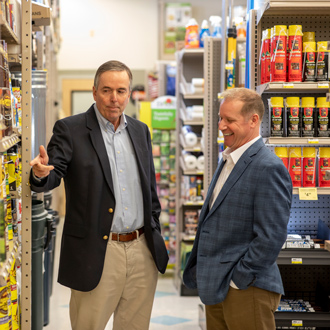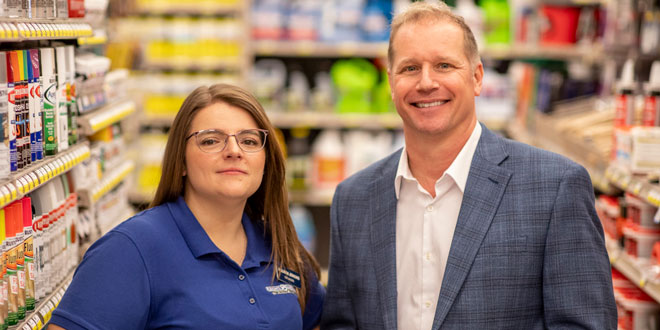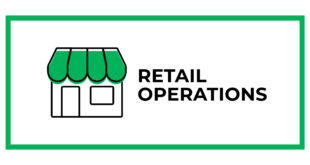Questions raced through Melissa Jenkins’ head when she learned Pleasants Hardware had sold. What would happen to her employees? How much would the company she loved change?
Buyers Russ and Joe Taylor, who own 11 Taylor’s Do it Center locations in Virginia Beach, Virginia, expected the staff at Pleasants Hardware to worry. Any transition in ownership can bring instability to a business and myriad changes for employees.
Many Pleasants employees didn’t know their company was for sale before the Taylors announced the acquisition. Some of them had worked for Pleasants for decades. And even the workers without long tenures were loyal to the operation’s history and brand.
The Taylors quickly addressed employees’ worries by initiating conversations at store meetings, offering incentives for workers to stay and assuring the staff the Pleasants brand would remain.
Read on to learn how their efforts kept most of the employee team together and discover the steps buyers should take to make an acquisition a positive experience for the staff.
Respecting a Brand
In 2016, a business broker approached Taylor’s Do it Centers to gauge the owners’ interest in buying a chain of seven hardware stores. The Taylors didn’t know the name of the business that was for sale or where it was located, but were curious.

To their surprise, the chain was Pleasants Hardware, a company with stores located less than two hours away in Richmond, Virginia. The company is well established in its community and was an operation the Taylors admired.
“We knew the folks who operated Pleasants Hardware and shared ideas with them over the past 20 years,” Taylor’s president and CEO Joe Taylor says. “It was extremely exciting for us, so I was ready to engage.
The Pleasants family had founded the business in 1915. The Hatcher family, who acquired it later, sold it to a local food products company, C.F. Sauer Co., in 1989. C.F. Sauer Co. was ready to get out of the home improvement business in 2016.
The Taylors, who have nine family members working in their operation, were eager to make Pleasants a family-owned company again. They understood Pleasants employees and customers loved the history, stores and branding.
Finding ways to consolidate operations after the purchase to improve efficiency was important to the Taylors, but they also knew they didn’t want to go in and change everything.
For one, the Pleasants stores would keep their name. The Taylors knew they would save money on marketing by converting the Pleasants stores to Taylor’s Do it Centers branding because they wouldn’t need to manage and promote two brands. However, they also knew the community valued the Pleasants family’s contributions to the area and the business they created.
“We respected that branding, even though we knew it was an expensive way to go,” Taylor says. “We wanted to respect and maintain the legacy of Pleasants Hardware.”
Pulling Together
Jenkins, who was an assistant store manager at the time, wasn’t at work the day the Taylors announced they were buying Pleasants Hardware. She got a phone call from Pleasants general manager Darrell Campbell who delivered the news.

“He wanted to be sure people who weren’t there didn’t miss the news,” Jenkins says. “My first reaction was, ‘What is going to change?’ My store manager felt like it was a perfect segue for retirement. I was wondering who my manager would be.”
Employees were full of questions about their job security, health insurance and earned vacation time.
“There was fear of the uncertainty, and, of course, it took some time to get our footing,” Jenkins says. “But those fears were unfounded. Joe Taylor is very hands on and clearly wants us to succeed. I think that involvement is a driving force. He came in and made a very comforting speech with an action plan.”
Reassurance from Campbell and the Taylors meant Jenkins never considered leaving, and she moved from an assistant store manager role into a manager position as part of the transition.
Losing good employees could have damaged Pleasants, so Campbell was concerned about what would happen to the company.
“I didn’t know if there was going to be a wave of people leaving,” Campbell says. “I was worried.”
Like Jenkins, most of the Pleasants team appreciated the Taylors’ efforts to show they valued the Pleasants people and brand, so they stuck together.
Protecting the People
An important step the Taylors took prior to finalizing the purchase of Pleasants Hardware was developing a relationship with Campbell, the company’s general manager, and getting him on board with their plans.
Up front, the Taylors offered Campbell financial incentives to stay with the company and assured him he was important to them as an employee. In turn, Campbell helped with the ownership transition.
Campbell was protective of the Pleasants employees and served as an advocate for them.
“I thought of the Pleasants staff as my people. I felt like I was responsible for them and I had to make sure they were taken care of,” Campbell says. “The Taylors made sure I had the tools to do that.”
7 Pointers To Help Employees Transition
7 Pointers To Help Employees Transition
The Taylors would go to the salesfloor in every store and make weekly visits. It was all about just being present and letting the staff know what they’d done well.
COMMUNICATE EFFECTIVELY
I think a lot of people just need to know what’s going on, what’s expected and if they’re doing it right.
ELIMINATE POOR PERFORMERS
When you eliminate the weakest links, it builds morale. If 20 percent of the people are doing 80 percent of the work, then reducing that gap means good people are no longer having to make up for someone else’s inability.
FIND SOMEBODY ON THE INSIDE
Identify a staffer who knows all the players and knows who gets what done. You need to know who’s good and who’s bad, who to keep and who to get rid of. It shows the people who are doing the work that you’re going to make the business better.
BE A ROLE MODEL
You can’t be aloof and expect people to follow you. Lead by doing. Be out there, engaged, in the middle of it, showing employees how to do it instead of telling them how to do it. Work with them side by side. They’re much more apt to follow you when they see you doing it.
INVEST IN THE GOOD PEOPLE
Early in the process, identify the top performers and recognize them through raises, bonuses and benefits. Show them they are worth the investment.
RESPECT CONCERNS
Understand that staff members are going to worry about their livelihoods and other details. Be supportive and ease their worries through authentic communication.
—Darrell Campbell, Pleasants Hardware General Manager
 Hardware Retailing The Industry's Source for Insights and Information
Hardware Retailing The Industry's Source for Insights and Information








